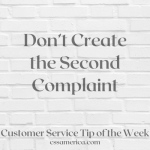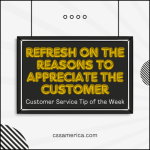Have you ever been deep into a conversation and then stopped, and tried to backtrack step-by-step to see how you got there?
The back-tracking can go something like this: We’re talking about the recent national elections because we were discussing local political elections because we were discussing a nearby zoning issue because we were discussing the property that adjoins our neighborhood because we were discussing putting a fence in the backyard because we were discussing getting a dog because we were discussing how much fun we have with a friend’s dog because we were discussing the dog’s name Pete because…well…you get the picture. We were talking about a dog named Pete, and we ended up talking about the recent national elections.
For an Economic Development organization’s Business Retention & Expansion (BRE) Program, it’s often helpful to do the same sort of exercise – not just to have fun, and not necessarily in a conversation, but about the life of the BRE program. Frequently, relatively young organizations (particularly those under 10 years in business), find themselves at a certain place, and they’ve evolved to that place. They may have had a grand plan to start with, but over time the strategic planning ended and the day-to-day fire-fighting and daily operations took over. And a great question to ask at that point is this: If we had to start this organization over again, how would it look different than it is today?
A great way to answer that question is to go back to the start of the BRE Program. Consider what were the initial goals, the initial focuses, the initial planned allocation of time and resources. How do those goals/focuses/time allocations differ from the reality of today?
The recent article City announces business retention program gives us some of that view of the start. These are some of the highlights from the article:
- Use the BRE program to better know specific needs from specific companies.
- Set as a goal of the BRE program to help businesses make profits and grow.
- Leverage the BRE program to proactively identify growth opportunities and business issues.
- Promote with local businesses the desire to keep them and have them hire and invest more locally.
- Target key companies and businesses.
- Look for macro-issues that impact multiple businesses – have a coordinated effort to address the concerns.
- Don’t be an island – create a stakeholder system to support research, relationship development, retention, and ongoing funding.
- Identify dedicated resources for the BRE program.
I’m not suggesting that what we do today is wrong, but what I am suggesting is sometimes it helps to refocus, and a great way to do that is to look at the initial plans, goals, and strategies. Then use those as a guide to redirect and refocus current efforts.
To reenergize your program and reallocate your time, go back to where you started in Business Retention & Expansion.
See more BRE blog posts at: http://brebuzz.com/bre-blog-posts/





















